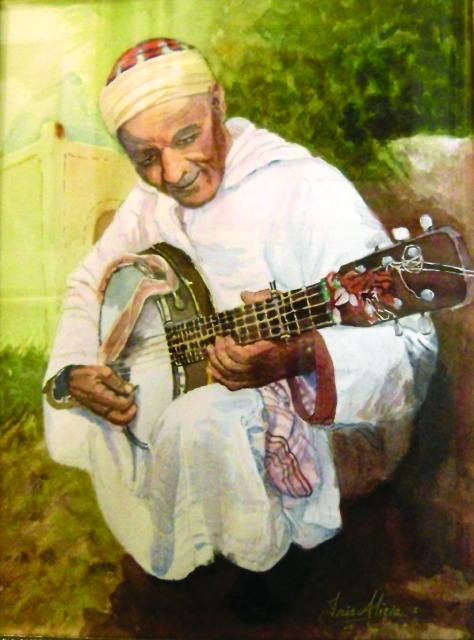Iris Lanyon
(told by José Paz '12)
Iris Alicia
Vélez Lanyon was born in San Germán, Puerto Rico in 1937. She
trained as a Social Science teacher and taught in Puerto Rico and in the
Worcester area. In the 1980's, as she lessened her teaching load, she was
finally able to enter the world of art and museums. In 1986, Iris satisfied a
life-long yearning when she took her first lessons in watercolor from Holden's
Jane Neale. She then continued her training under Worcester Art Museum
instructors Susan Swinand and Bill Griffith. Iris has also taken workshops with
Timmothy Clark - in Worcester, and in Provence, France. In the meantime, Iris
became a docent at the Worcester Art Museum and also worked part-time at the
Higgins Armory Museum. She resides in "The Willows" of Worcester where she
teaches water color to the residents.
The
artist's subject matter is drawn from her own experience, and from photographs
taken during her travels throughout Europe, Asia, and her native Puerto Rico.
Her current water color style tends toward realism and reflects not only her
travel experiences, but mostly, her penchant for vivid colors and
fantasy.
"I work with subjects that either
'speak' to me, or evoke deep feelings about them. I also love to experiment
with different color combinations in order to produce different moods. I enjoy
working textures into my paintings with dry brush techniques, or by salting, or
by using gesso. Lastly, I seem to be an innate story-teller, and as I work on a
particular piece, I become part of it, I get involved with the subject matter
and develop a story that transports me into the world of the painting. The end
results are images which, more often than not, imbue nostalgia, curiosity or
plain wonderment in the viewer."

Reprinted by permission of Iris Lanyon
© Iris Lanyon
Inspired by her
frequent travels to scenic places around the U.S., Europe and Asia, Iris has
created more than 300 paintings, which have been exhibited thematically.
Recently, Iris took part in a painting workshop in the Skopelos Island in
Greece. There she was able to sell many of her paintings during the art
exhibition that took place at the end of the workshop. Currently, her paintings
are found in private collections in The U.S., Canada, Puerto Rico, England and
Greece.
Iris Alicia prefers to explore
themes that touch the soul, like the musician (left) that she met in a small
town in the Atlas Mountains of Morocco; she identifies herself with such works.
She also works with themes that create a sense of yearning like the vistas of
Santorini, Granada or other places where she would like to visit
again.
Iris enjoys experimenting with
combinations of colors that evoke different emotions and she loves to develop
textures in her paintings using a variety of techniques like the dry brush,
salt, and gesso.
While Iris works on one
of her pieces, she concentrates on the person, or the setting, or the view that
she is painting, developing in her mind story (real or imagined) related with
the theme, becoming one with her painting in such a way that she feels as if
she is inside of it. The result is a work that inflicts nostalgia, curiosity,
surprise, or admiration from the person viewing her works.
¤ ¤
¤
José Paz is a current sophomore
at Holy Cross. He has a self-designed major in architectural studies, with a
minor in visual arts studio. Born in Zacapa, Guatemala, Paz has direct ties
with his Latino heritage. As a child, he always enjoyed art, particularly
painting, and was fascinated when he learned of the possibility of combining
art and architecture. Paz's Latino heritage is evident in his work, as he draws
upon his Mayan ancestry. The use of bright colors, natural elements, and
monuments are also apparent in his works. He seeks to identify with
representative images, citing that there is always another layer below the
surface image. His goal is to create innovative art that merges art and
architecture.
|